Marvel Comics #1 (1939)
“The Angel”
by Paul Gustavson
When it comes to the Golden Age, for what will become Marvel there are three powerhouses: the Human Torch, Namor and Captain America. But there are other minor heroes that still managed to get their own legacy and still be honored for their importance in the development of their universe.
The Angel… is not one of them.

We begin with, what else, racketeering.

It’s such a common threat in the Golden Age that I think racketeering stories might outnumber war stories.
(to be fair, America hadn’t joined the war yet)
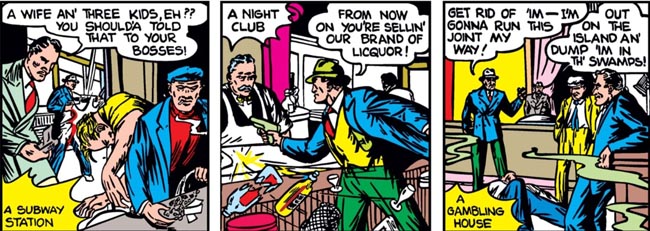
It’s such an epidemic that the Mayor (presumably of New York, though the city is not named here) is completely useless even with the help of Commissioner Moustache here.
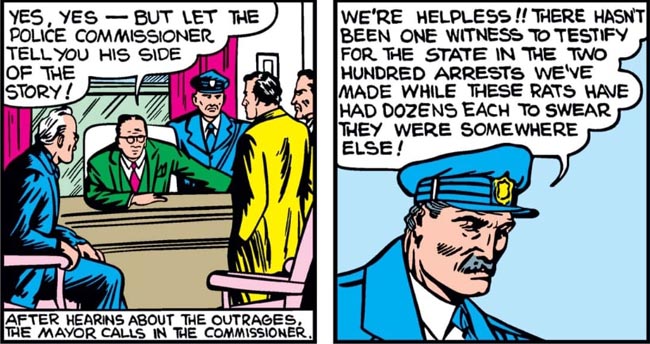
The “concerned citizens” asking the Mayor to do something are so fed up with this that they ask to be given full permission to “take the law in their hands”.
AND THE MAYOR AGREES.
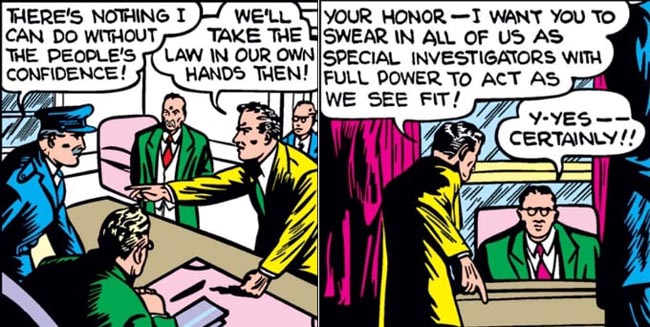
That’s apparently a less problematic solution than calling The Angel.
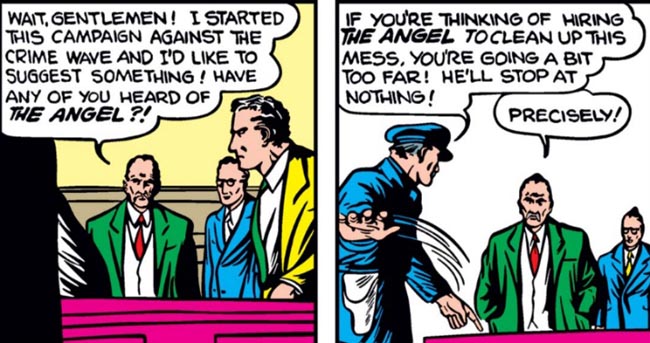
I know this is supposed to interpreted as “The Angel is a tough guy who gets results”, but they make him sound like an outright assassin.
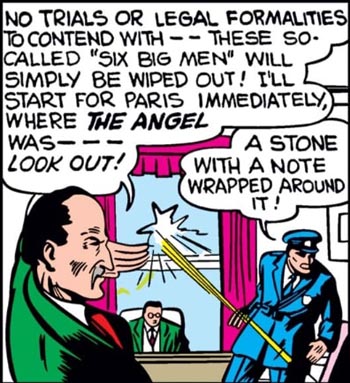
However The Angel is way ahead of all of them, because he announces that he’s going to take care of the Six Big Men (the nickname of the racketeers) and even their boss.
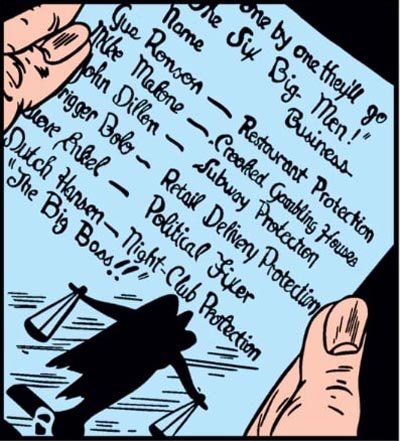
One of the Six Big Men is under arrest at the time of the threat, but he’s let out by “a fixed jury”.

The first Angel stories really go out of their way to make you believe he’s some kind of supernatural entity. It’s never revealed how exactly he makes those shadows appear despite not having any wings; is he making those with his cape somehow?
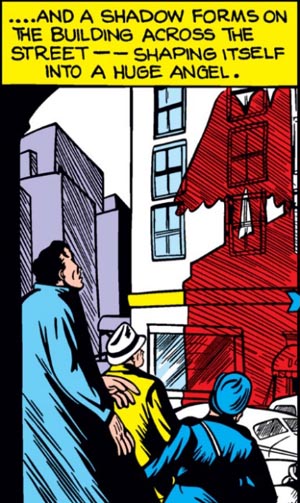
It’s not a bad premise… plenty of early heroes do this kind of stuff… but there’s a reason why Batman chose a bat for his symbol. It’s kind of hard to make the sight of an angel sound terrifying.
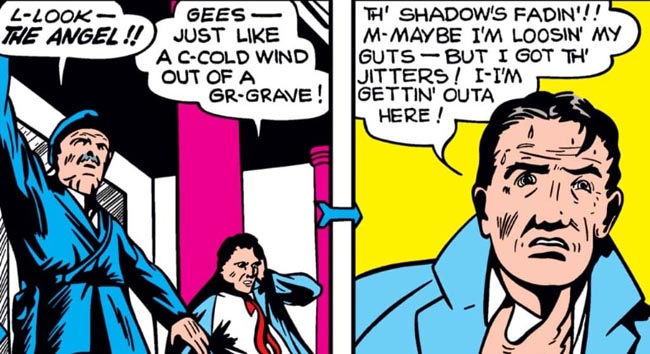
I mean maybe if he was “The Angel of Death”, but as a guy in a bright costume it’s a hard sell.
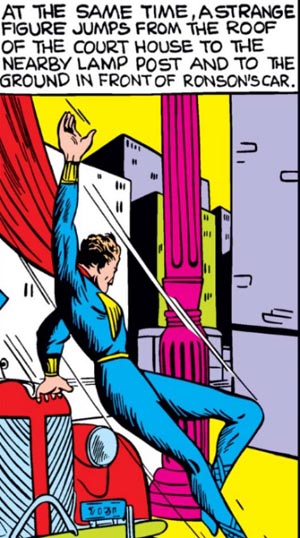
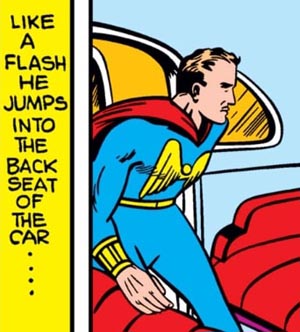
Also, uhm, The Angel is kind of a serial killer of criminals.
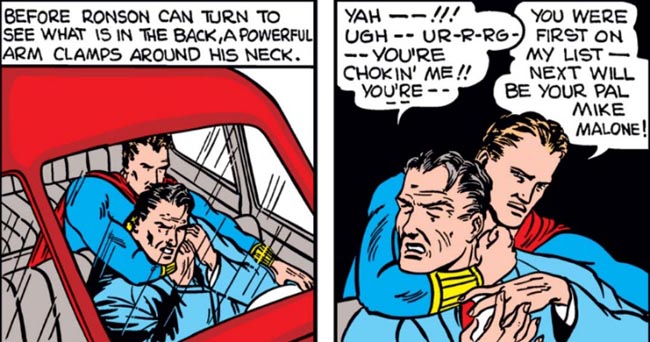
I’m not joking: he’s basically Golden Age Punisher.
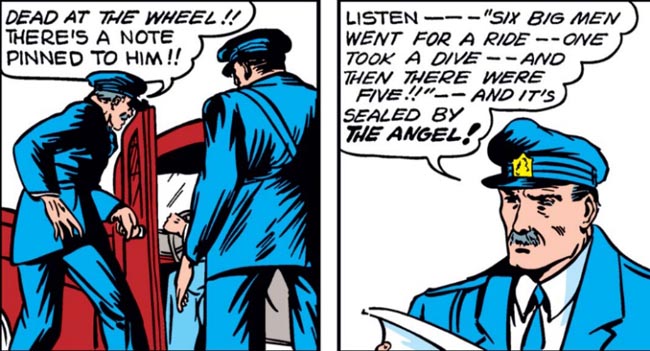
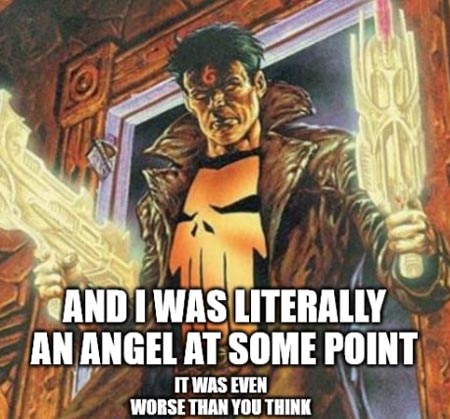
The Angel is so silent he can sneak up to anybody…

…so he can BEAT A GUY TO DEATH…

…and scare another one so much he drops out the window!!!

The Angel is a powerhouse, but he’s still human: once they gang up on him, the racketeers manage to knock him out.
How polite of them to use their guns as hammers and NEVER FIRE A SINGLE SHOT.

To be fair they do threaten to shoot him after they tie him up, but they’re stopped by their boss, Lil.
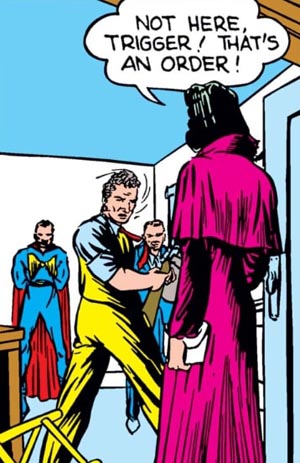
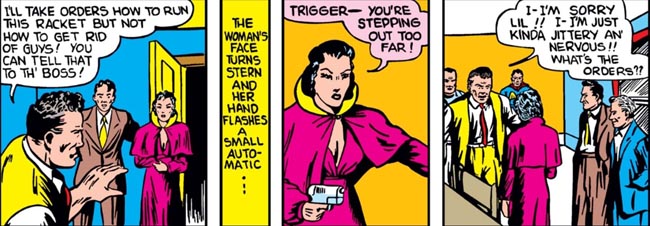
They could just shoot The Angel, but instead they take him to a field and tie him to a tree…

…only for Lil to give him the means to escape.
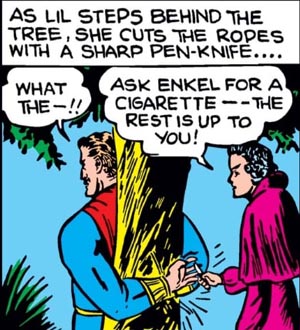
Remember kids, this is why you ALWAYS shoot the hero IMMEDIATELY after capturing him.
Comics Archeology does not condone shooting heroes immediately after capturing them. We do, however, find it hilarious.
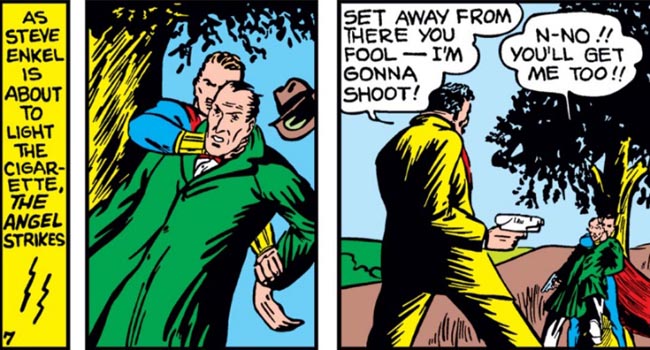
And with this, five out of the Six Big Men are already dead.
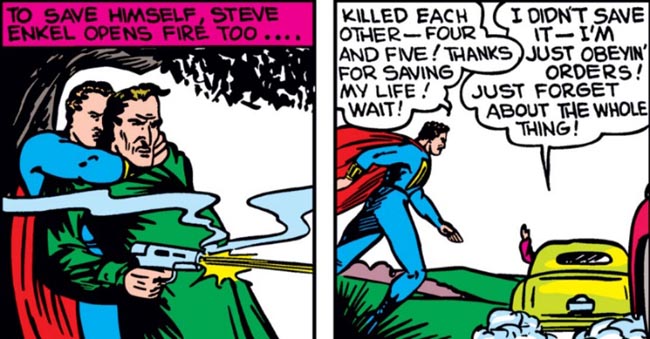
To my surprise the sixth is not explicitly murdered by The Angel. But it’s safe to assume he still dies.

However the sixth target left behind enough clues to discover the identity of Big Boss, who is not actually Lil…
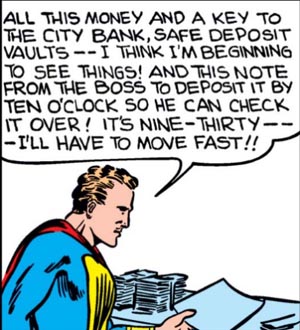
…but not only he’s the boss of Lil, he’s the one who wanted The Angel on the case!!!
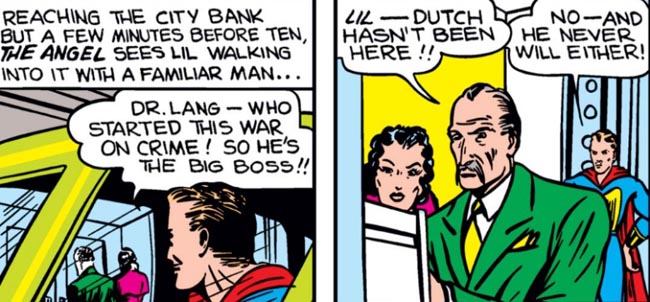
Okay I get why they wanted The Angel to murder the competition, but… was it such a great idea to have Lil free him and just let him go? I guess they were really confident that he wouldn’t connect them to the Six Big Men.
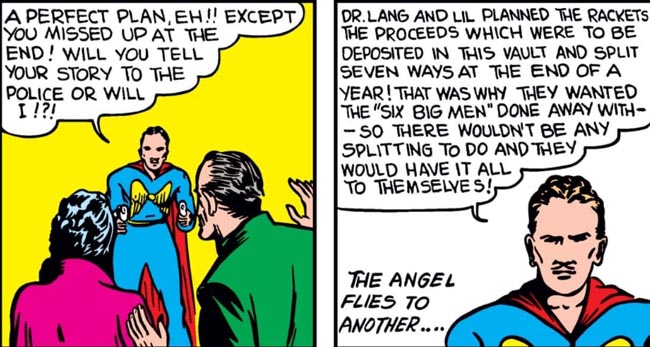
Both Dr. Lang and Lil never appear again. I can’t be the only one thinking The Angel later killed them too, right?
I neglected to mention it in the Human Torch review, and while we’re STILL not done with Marvel Comics #1 (because Namor also debuted there… kinda), I might as well mention it here before I forget once again.
As of 2023, Marvel Comics #1 is the fifth highest paid comic book: a copy sold for 2.4 million dollars in 2022. It’s the third Marvel comic in terms of value: Captain America Comics #1 sold for 3.12 million dollars (but of course it has Captain America punching Hitler on the cover) and Amazing Fantasy #15 sold for 3.6 million dollars in 2021 (but that’s the first Spider-Man story).
Historical significance: 2/10
The fact that The Angel exists is basically the only thing of significance.
Silver Age-ness: 3/10
Either nobody shoots or they miss by a mile when they’re point blank.
Does it stand the test of time? 7/10
The plot is not exactly thick, but there are enough twists and turns to keep it interesting. The Angel himself is surprisingly violent, and he still manages to keep around himself an aura of mystery that you wouldn’t anticipate by just looking at him.
In fact, if he had a better costume, I could easily see a modern version running around. Instead…
How close is this to the modern character? What modern character?
The Angel was quite active during the early Golden Age, collecting around a hundred appearances.
Highlights included acquiring the magical “Cape of Mercury” that made him fly…
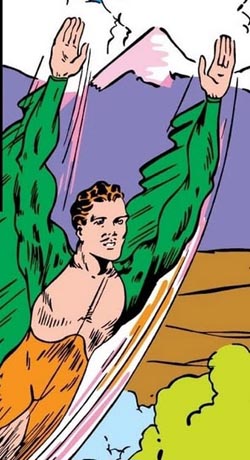
…and punching Nazi zombies.

And he just… kind of disappeared with the end of the Golden Age. Unlike other heroes of the era, however, he failed to make the jump to the Silver Age… possibly he was a bit too much down-to-earth when compared with the other heroes of his time.
His FAR more famous namesake debuted with the X-Men in 1963, and no attempt whatsoever was ever made to connect him to his Golden Age predecessor.
Which I’ve always found baffling because the first time we learned his extended origin was in the backup story of X-Men #55 (during the Living Monolith saga).
That would’ve been the PERFECT time to draw a comparison because:
A) we learned that Angel started out as a street hero, like the original
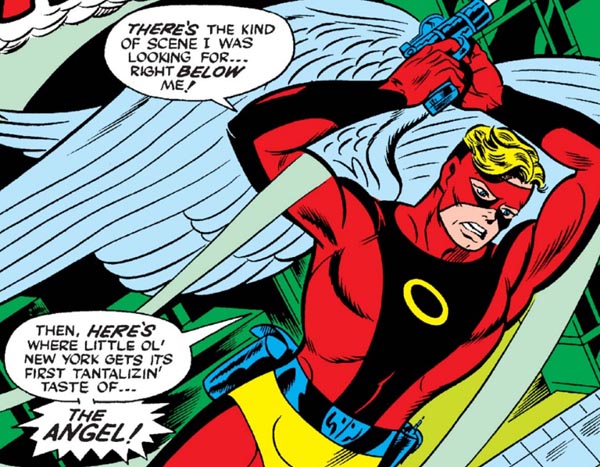
B) his calling sign was painting a halo, which could’ve been the silhouette of an angel that was the original’s calling sign
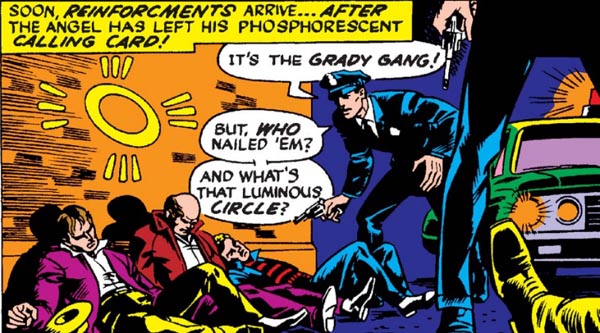
C) the father of the X-Men’s Angel already kind of looks like the original, so he could’ve been a relative

D) it was a Roy Thomas story! The guy loves Golden Age stories and to make any connection to them, so if ANYONE were connected the two Angels, it would’ve been him!
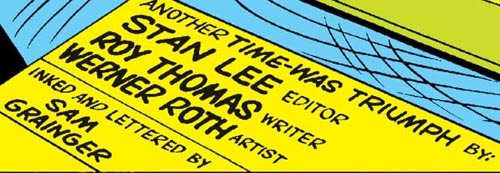
Other than that, the only reminder that the original Angel existed was when Rick Jones created a copy of the Golden Age heroes in 1972’s Avengers #97 written by… who else?.. Roy Thomas.

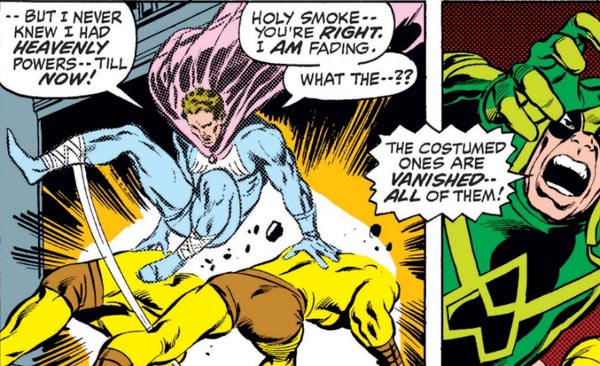
The actual Angel wouldn’t show up until 1993, on a USAgent miniseries written by Mark Gruenwald of all places.
Which is where we discovered that the Angel was the one to have created the serial killer Scourge Of The Underworld, which goes around killing supervillains.
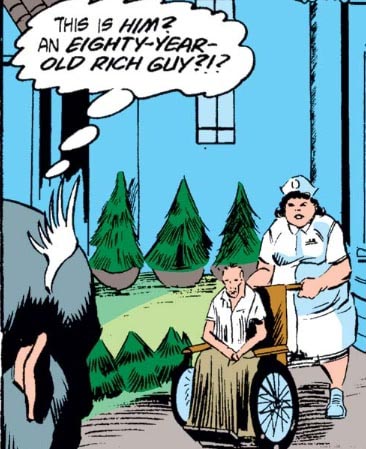

Since this comes up very late in the miniseries, I thought it was a very weird decision… why turn this old-time superhero into the man behind an organization so twisted it was ALSO controlled by the Red Skull?
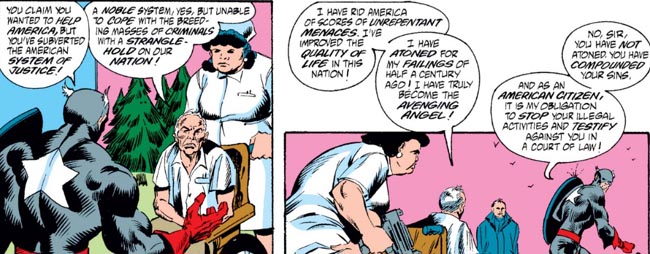
But having read Angel’s first story now… yeah I get what Gruenwald was going for.

The Angel was still alive at the end of that story. He was heavily involved in the WWII-set miniseries “The Marvels Project” by Brubaker & Epting (which I highly recommend).
In the last issue his grandson received his mask and guns (both of which he started using later in his career) from Captain America, suggesting that the original Angel had died.
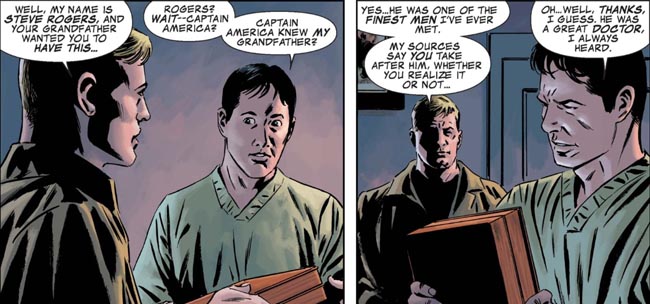
That was in 2010; I’m not aware of anything that has been done with the character since.
Considering he DEFINITELY has a darker side that most of his other Marvel colleagues from the Golden Age, I wouldn’t mind seeing a further exploration of his killing sprees adventures.
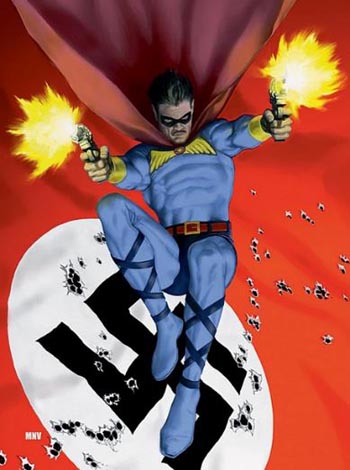

Pistol-whipping heroes was kind of a Golden Age staple, along with “flesh wounds” that did little or nothing to impede the hero. (Golden Age Batman once took three bullets in a fight and kept going, winning the fight. He then stumbled to a nearby doctor’s surgery, demanded the doctor treat Robin, then apologized for “being a sissy” when he collapsed.)
But none of this compares to the universal Golden Age trope of a hero being “creased” by a gunshot. (i.e. being shot in the head such that the shot merely grazes the hero’s scalp, knocking him out without any of the real world consequences like skull fractures or massive blood loss from a scalp wound.)
To be a Golden Age hero, you had to have a skull thicker than Homer Simpson’s.
‘Tis but a scratch.
I always thought the Angel looked pretty dopey, with the wavy hair and mustache. I’m sure they were going for a Clark Gable or Errol Flynn look, but he just looked like Don Ameche running around in tights and a cape. (Or even worse, Howard Sprague from The Andy Griffith Show.) The fact that he was pretty murderous makes his appearance even more incongruous. “Local bank president hurls mobsters to their deaths.”
The last image in the post, I’m assuming from The Marvels Project, makes him look pretty badass, so I thought “Oh, he just needed to be drawn by a modern artist,” then I realized that no, they just drew the Comedian from Watchmen.
Why would you say the “outright assassin” reading is incorrect, and then go on to show that it’s exactly the case?
It’s a fine distinction, but I’d classify Angel as a murderer rather than an assassin.